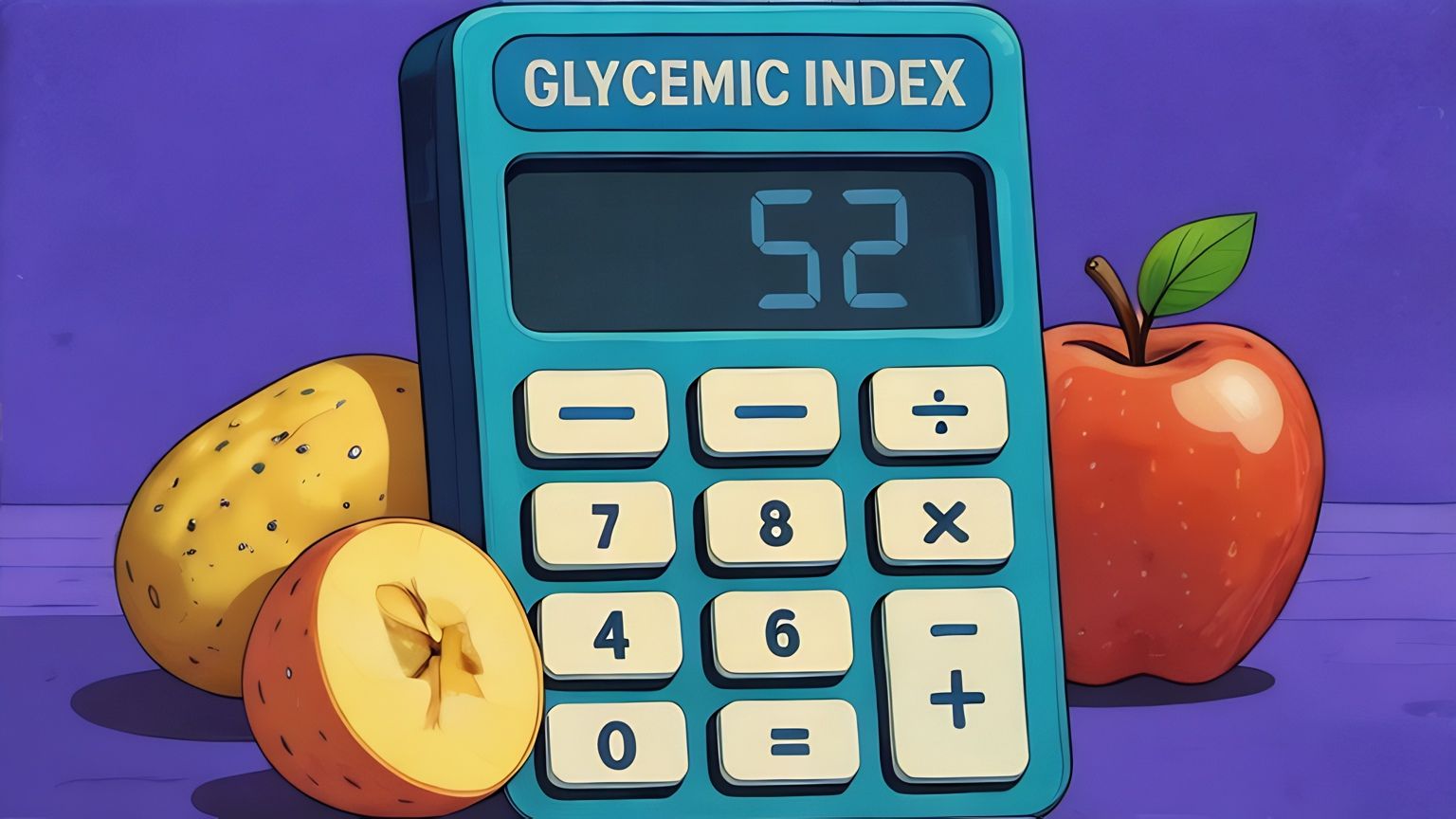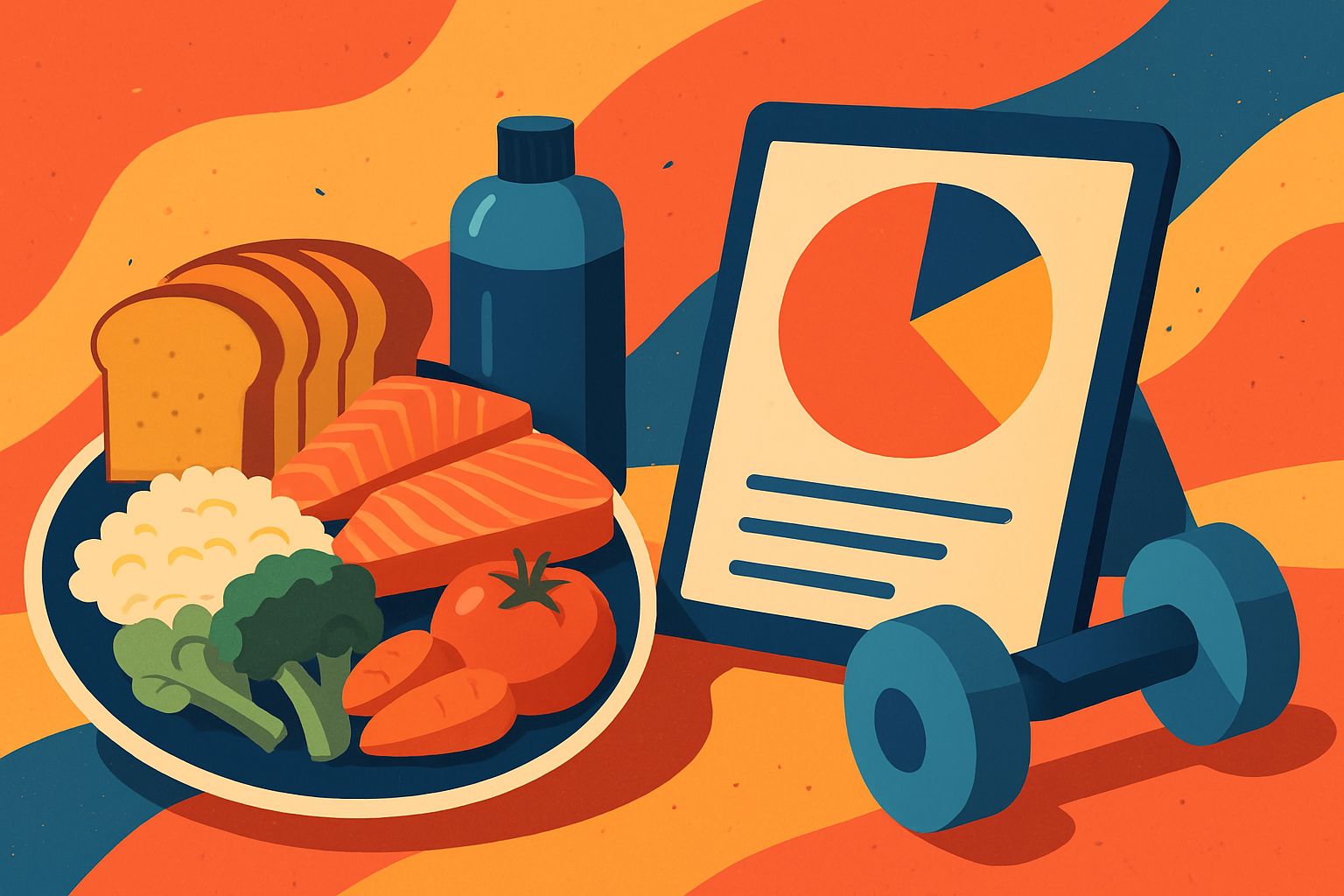Glycemic Index/Glycemic Load Calculator: The Ultimate Guide to Smarter Carb Choices and Lasting Energy
In today’s world of nutrition overload, where buzzwords dominate labels and diets change with every scroll on your feed, one concept remains powerfully relevant and scientifically sound: blood sugar control. For anyone seeking sustained energy, better focus, weight management, or chronic disease prevention, understanding how your body responds to carbohydrates is a game changer. That’s where the Glycemic Index/Glycemic Load Calculator steps into the spotlight—a transformative tool that helps you decode how carbs impact your body and empowers you to make choices that keep you energized, balanced, and thriving.
What Is a Glycemic Index/Glycemic Load Calculator?
At its core, a Glycemic Index/Glycemic Load (GI/GL) Calculator is a nutritional tool designed to help you understand how different carbohydrate-containing foods affect your blood glucose levels. It works by combining the Glycemic Index of a food—a number that indicates how fast a carbohydrate raises blood sugar—with the Glycemic Load, which factors in the actual amount of carbs in a serving. While the Glycemic Index tells you the speed of sugar absorption, the Glycemic Load tells you the impact of that specific serving on your blood sugar levels.
Think of the GI as the speedometer, and the GL as the full trip distance. You need both to get the real picture.
This calculator is especially useful for people managing diabetes, insulin resistance, PCOS, or anyone following low-glycemic or balanced-carb diets. But beyond clinical needs, it’s also a powerful asset for athletes, busy professionals, and anyone looking to optimize energy levels and curb crashes throughout the day.
Glycemic Index & Load Calculator
The Science Behind the Numbers: How GI and GL Are Calculated
The Glycemic Index is measured on a scale from 0 to 100. Pure glucose, which rapidly spikes blood sugar, ranks at 100. Foods are then compared to this benchmark based on how they affect blood sugar levels two hours after eating. Low-GI foods (under 55) are digested and absorbed slowly, causing a gradual rise in blood sugar. Medium-GI foods range from 56 to 69, while high-GI foods (70 or above) cause a rapid spike and drop in blood glucose.
However, the GI alone doesn’t tell the whole story. That’s where Glycemic Load comes in. It’s calculated using a simple formula:
Glycemic Load = (Glycemic Index × grams of carbohydrates per serving) ÷ 100
This gives a much more realistic view of how a typical serving of a food will affect your blood sugar. For instance, watermelon has a high GI of about 72, but its actual carb content per serving is very low—meaning its glycemic load is only around 4, making it a low-impact food despite its high GI rating. That’s the magic of GL—it balances context with science.
When you use a Glycemic Index/Glycemic Load calculator, you simply input the food name and portion size. The tool pulls GI values from extensive databases—often from reputable sources like the University of Sydney’s GI database—and calculates the corresponding glycemic load for that serving size. You instantly get an estimate of how that food will affect your blood sugar.
Why the Glycemic Index and Load Matter in Real Life
Blood sugar stability isn’t just a concern for people with diabetes—it affects everyone. Ever feel wired and then sluggish after a sugary breakfast? Or experience a mid-afternoon crash that leaves you reaching for another coffee? That’s the rollercoaster effect of unstable blood glucose. High-GI foods can send your blood sugar soaring, triggering an insulin spike, and eventually a crash that leaves you tired, hungry, and irritable.
By using a GI/GL calculator, you can avoid this chaos. You gain the power to choose foods that provide a slow, steady release of energy, rather than a burst followed by a slump. Low-GI, low-GL meals help you stay focused, satisfied, and on top of your game—whether you’re tackling a workout, a workday, or simply striving to feel your best.
For long-term health, the benefits are even greater. Studies show that diets emphasizing low-GI and low-GL foods are associated with lower risks of type 2 diabetes, heart disease, obesity, and certain cancers. They also help with hormone balance, inflammation reduction, and metabolic resilience. In short, understanding glycemic response is one of the smartest things you can do for your body.
Using the Calculator as a Daily Game Plan
Imagine sitting down to plan your meals for the day. You know you want to avoid energy crashes and support your fitness routine. You pull up the Glycemic Index/Glycemic Load Calculator and start plugging in your choices. A bowl of steel-cut oats? Low GI and moderate GL—perfect for a stable breakfast. A banana? Moderate GI but manageable GL, especially with some almond butter. That white rice side dish? High GI and high GL—maybe switch to quinoa or add legumes to balance it out.
This tool isn’t about restriction—it’s about strategy. You can still enjoy pasta, fruit, and even sweets—but with smarter pairings, portion control, and timing. You become a blood sugar ninja, navigating your meals with finesse instead of fear.
It’s also incredibly useful when dining out or trying new foods. Wondering if that sushi roll is a good pre-workout meal? Curious about the glycemic impact of your smoothie? The calculator gives you real-time feedback, helping you make choices that match your energy goals and support your lifestyle.
Empowering Athletes, Professionals, and Everyday Heroes
Whether you’re an endurance runner, a busy CEO, or a stay-at-home parent chasing toddlers, your body needs consistent fuel. The Glycemic Index/Glycemic Load Calculator helps you fine-tune your intake to optimize energy for your schedule. Athletes can use it to load up on low-GL carbs before long workouts, ensuring stable energy without crashes. Post-workout, they can use the calculator to find moderate or higher GL foods that help replenish glycogen stores and accelerate recovery.
Professionals with demanding days can use it to plan energy-sustaining lunches that won’t leave them nodding off in the afternoon. Parents can build smarter snacks for their kids, avoiding sugar highs and inevitable meltdowns. And anyone managing chronic fatigue, anxiety, or brain fog will discover how much of a difference stable blood sugar can make.
This tool is also a secret weapon for weight loss. By keeping insulin levels steady, you reduce fat storage signals, improve satiety, and avoid the binge-restrict cycle driven by sugar highs and lows. Weight loss becomes less about starving yourself and more about fueling smarter.
Beyond the Scale: Understanding the Full Nutritional Picture
While glycemic data is essential, it’s important to remember that GI and GL are just part of the nutritional equation. A food with a low GI might still be high in saturated fat or low in vitamins. Likewise, a food with a high GI might be packed with fiber, antioxidants, or essential nutrients. That’s where the calculator becomes even more valuable when combined with general nutrition info.
For example, sweet potatoes have a moderate GI and high GL depending on preparation—but they’re also rich in vitamin A, fiber, and potassium. White bread has a high GI and GL but minimal nutrition otherwise. The calculator helps you weigh the pros and cons, especially when you’re choosing between similar foods.
It also helps you identify the smart additions. Want to lower the GI of your meal? Add healthy fats or protein—like avocado, chicken, or nuts. These slow digestion and blunt the glucose spike. The more you use the calculator, the more intuitive these adjustments become.
Fueling Your Health Journey with Confidence and Clarity
Let’s be honest—nutrition can feel like a confusing maze. One day fat is the enemy, the next it’s carbs. Everyone seems to have an opinion, and the rules are always shifting. The Glycemic Index/Glycemic Load Calculator cuts through the noise with clarity and simplicity. It gives you real data, grounded in science, and puts the control back in your hands.
It also builds trust with your body. As you track the glycemic impact of your meals and notice how you feel, you begin to develop a new relationship with food. You no longer eat on autopilot or rely solely on cravings. You listen. You learn. You lead your own health journey.
The calculator becomes more than a tool—it becomes a guide, a partner in your progress, and a mirror that reflects the incredible power of knowledge.
Personalized Health in a Digital Age
As we move into a future of personalized nutrition, tools like the GI/GL Calculator are leading the charge. They’re no longer just static charts on paper—they’re dynamic, user-friendly, and available in seconds on your phone. Apps like MyNetDiary, MyFitnessPal, and Glycemic Index Load Diet Tracker integrate GI and GL tracking into daily food logs. Some even offer AI-driven recommendations to optimize your meals based on your personal glucose response.
Wearable tech is also joining the movement. Continuous glucose monitors (CGMs) are becoming more accessible, and some platforms are linking CGM data with food tracking to give you real-time feedback. T hat means you’ll not only know the theoretical glycemic impact of your meals—you’ll see it live in your body.
The result? Hyper-personalized nutrition that adapts to your unique metabolism, lifestyle, and goals. The calculator is no longer a static tool—it’s part of a powerful ecosystem guiding you toward better health, better energy, and a better life.
Redefining the Way We Eat—One Carb at a Time
In a world obsessed with diets, fads, and fast fixes, the Glycemic Index/Glycemic Load Calculator offers a refreshing dose of balance. It doesn’t label foods as “bad” or “off-limits.” Instead, it provides context. It helps you understand the impact of your choices, so you can align them with your values, goals, and preferences.
Maybe you choose a high-GL treat for a post-race reward. Maybe you plan a low-GI day for better focus during work. Maybe you blend both for a sustainable, enjoyable lifestyle that supports your whole being. The point is—you’re in charge. You’re no longer guessing or reacting. You’re choosing, intentionally and intelligently.
Food becomes a source of energy, not stress. You stop chasing diets and start building your own rhythm—one that’s grounded in science, tuned into your body, and aligned with your life.
The Final Word: Your Power Is in the Numbers
At the end of the day, the Glycemic Index/Glycemic Load Calculator is more than a digital tool—it’s a nutritional compass. It empowers you to navigate the carbohydrate jungle with wisdom, grace, and confidence. Whether you’re managing a health condition, optimizing your athletic performance, or simply striving for steady energy and focus, this calculator is your silent ally.
Every time you log a meal, explore a food, or plan your day, you’re investing in your well-being. You’re learning to eat not just for taste—but for function, fuel, and freedom.
So go ahead—load up the calculator, enter your favorite foods, and unlock the secret to smarter carbs and better living. Because when you know how your body responds to food, you unlock your full potential. And that’s a journey worth every bite.




